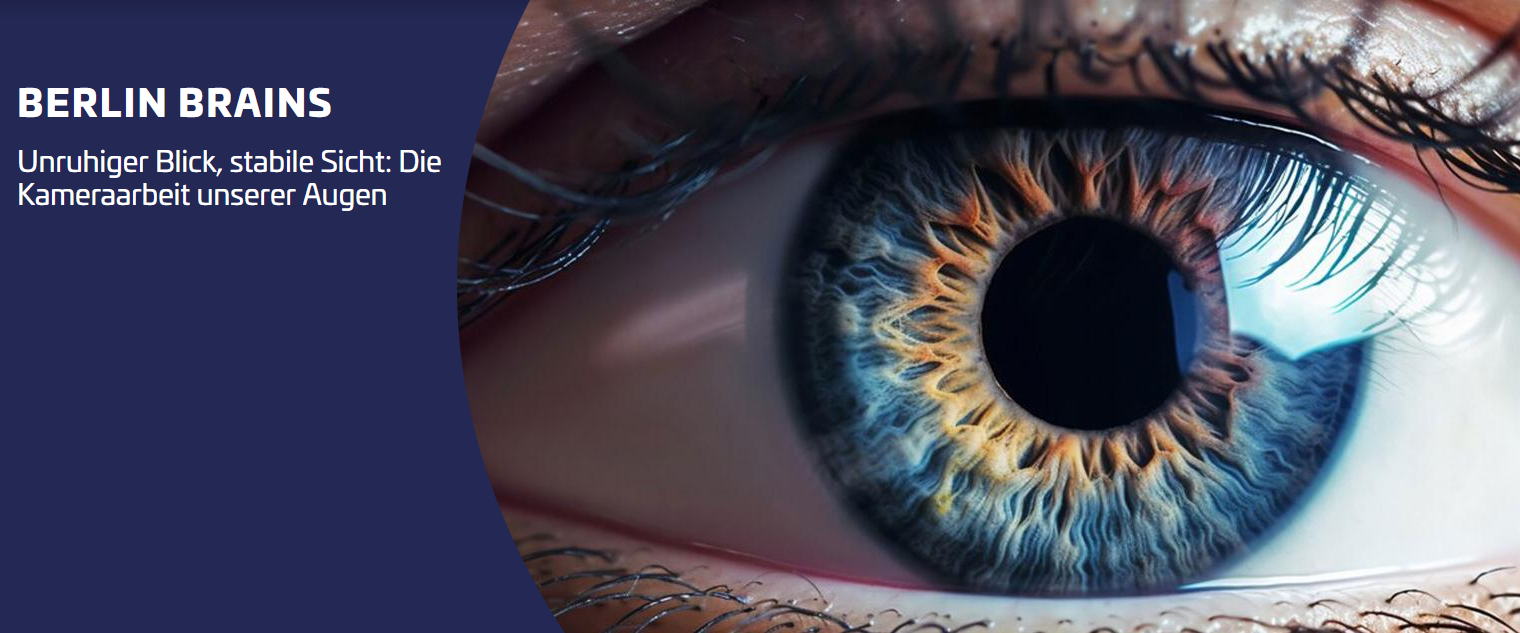SCIoI at Berlin’s Zeiss Planetarium – Eyes in motion: Understanding active perception
SCIoI members Martin Rolfs and Nina Hanning recently took the stage at the Zeiss Grand Planetarium Berlin to present “Restless gaze, stable vision: The camera work of our eyes.” The event, part of the Berlin Brains series organized by the Stiftung Planetarium Berlin, explored how our eyes and brain work together to create a stable visual experience despite constant motion.
Unstable eyes, stable vision
If our eyes were cameras, the footage would be chaotic and blurry as they rapidly shift from one point to another. Yet, our perception remains smooth and continuous. How does this happen? Martin and Nina explained the mechanisms that stabilize our visual experience, uncovering the brain’s ability to filter and process visual information while ignoring distractions.
Their live demonstration on stage brought these concepts to life, using high-precision eye-tracking and motion-tracking tools to analyze visual perception in real-time. Watch the video below to see how the unsuspecting presenter of the evening, Jochen Müller, served as the “guinea pig” for these cutting-edge experiments. The interactive demonstration offered a unique opportunity to see the methodologies in action and how they reveal hidden processes in the brain.






